IndiaWilds Newsletter Vol. 9 Issue X
ISSN 2394 – 6946
Learnings from Another Toxic Deepawali:
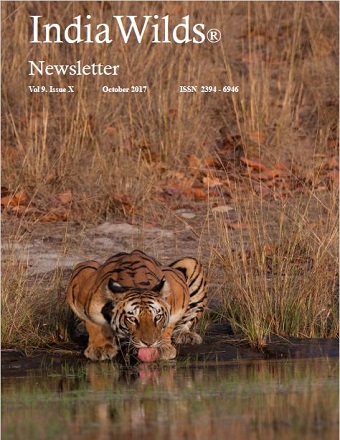
Indiawilds Newsletter PDF – Oct 2017
Another Deepawali has passed. The usual players have once again made familiar noises about how the air quality of Delhi was affected by bursting of firecrackers. One news paper article even came out with headlines “Air Quality in Delhi ‘Improves’ to ‘Very Poor’ after Diwali. Despite the pun, one can make out that nothing much has improved on the ground as far as air quality is concerned.
Every body knows that Deepawali is a major festival in most parts of India and especially so in Delhi. People prefer to burst firecrackers, some for fun and some to show off their wealth. The age old practice of lighting lamps is restricted to a few. It is well known that tons of firecrackers get burst during that period. So the Government was well aware about it and the impact on air quality. The Hon’ble Supreme Court decided to ban sale of firecrackers in Delhi. Interestingly, the same SC bench decided not to modify its order and ban bursting of fire crackers in Delhi.
While banning sale of firecrackers, Supreme Court had said “We are of the view that the order suspending the licences should be given one chance to test itself in order to find out as to whether there would be positive effect of this suspension, particularly during Diwali period.”
Indian’s are known to quickly find out loopholes and exploit it. And in the era of internet and whatsapp, shifting of sale of firecrackers from the market place to online and private whatsapp groups was quick. Technically the sellers showed point of sale as UP or Haryana and then delivered firecrackers to people in Delhi. So people who wanted to burst firecrackers could easily do it.
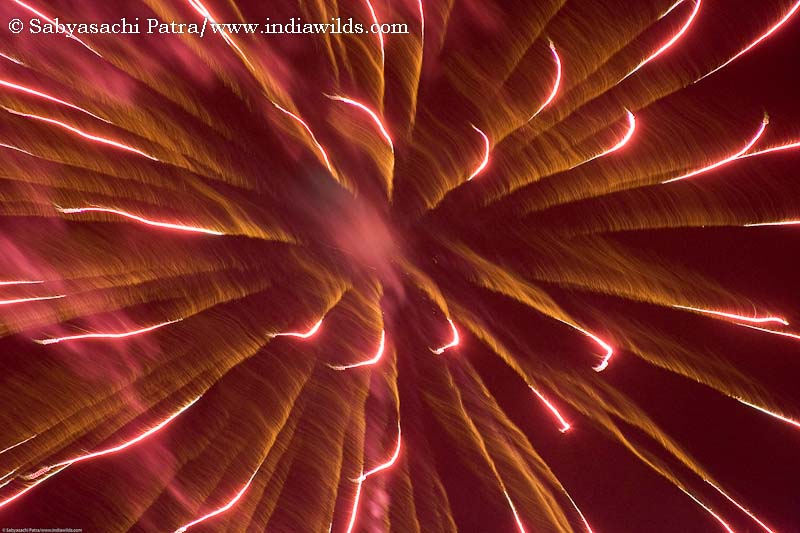
Fireworks in the night sky
We are not sure why the Hon’ble Supreme Court didn’t ban bursting of firecrackers in Delhi. Unfortunately, simply banning sale in Delhi didn’t have any effect and the Hon’ble SC also noted the fact that firecrackers are still sold.
Only Ban of firecrackers, though a interim order, is not the solution and it doesn’t appear to be following the spirit of solving the problem. Intentionally leaving a loophole is not in the spirit of ‘dharma’. It may be pertinent to remind ourselves about Yudhisthira’s lie from Mahabharata. During Mahabharata War, on a day Guru Dronacharya became highly destructive and was unstoppable. On that day no one could beat him. So the pandavas devised a plan to disarm him. Bheema killed an elephant by the name Aswatthama, the namesake of Guru Dronacharya’s only son. Bheema then shouted “Aswatthama hata ha” means Aswatthama is dead.
Guru Dronacharya was stunned and saddened and immediately wanted confirmation. He asked Yudhisthira who was known to speak the truth. Yudhisthira knowing the gravity of the situation answered “Aswatthama hata ha” and then in a low tone added “nareba gunjareba”. By adding in a low tone “whether man or elephant”, technically Yudhisthira had spoken the truth. However, it was not in the spirit of dharma and is considered to be a lie for which he had to visit hell.
The Mahabharata example is in keeping with the times where we often talk about our glorious past but fail to adhere to the philosophies enshrined in those epics.
We are not sure as to the actual cause of the Supreme Court’s refusal to ban bursting of firecrackers. Nevertheless a segment of traders were pretty happy as they had illegally imported couple of thousands of crores worth firecrackers from China. Some of the imports are caught by customs and sent for labs for analysis. The analysis reports are said to take 4-6 months time and by that time the importers generally pay the fine and release the consignments. The chinese crackers are generally cheaper as the manpower costs there are cheaper, scale is huge and the quality of chemicals used is inferior.
Import of firecrackers have been banned since 1992. However, importers hide the firecrackers in different containers along with other products like bicycle and auto spare parts. Importers generally give very scanty information about their address and use false names and addresses to import.
Since lot of money is involved, traders, lawyers, politicians, social media influencers etc try to give this ban a religious colour. The Hon’ble Supreme Court has warned against giving it a religious colour, nevertheless, it has inexplicably given the interim order with loopholes which were exploited by the unscrupulous.
Nevertheless in this dark episode there is a shining light.
The petition to ban firecrackers was filed on behalf of three kids Arjun Gopal, Aarav Bhandari, Zoya Rao Bhasin. In the original petition they had said “their lungs are not fully developed, making their systems more vulnerable and prone to lung disease, asthma, coughing, bronchitis, and retarded development of nervous system and cognitive impairment”.
This year, many kids have preferred not to burst firecrackers. They have preferred to light traditional lamps and candles and celebrate a noise free deepawali. On probing kids, it comes out that almost all of the Schools have taken stands to raise awareness among kids regarding the deleterious impact of fire crackers on the health of people and its role in the smog in Delhi.
Marketing professionals know the role played by Kids in buying decisions. The kids are not only major influencers in buying consumer durables but also in cars where the adults are supposed to be deciding on the basis of specifications. The advertisements targeted at kids have been highly effective as kids can be seen talking about specifications.
There are many environmental activists who had earlier failed to convince their kids about the impact of firecrackers. However, the same kids have listened to their teachers and classmates in School and have come back convinced. This tells us that teachers are more effective in convincing kids than well meaning individual parents.
Our generation as well as the previous one has failed spectacularly in saving Wild India. Infact we have presided over the destruction of India’s environment, forests and wildlife. Given that kids have been pushing adults for action, if we can use the teachers and the Schools then the message of saving environment, forests and wildlife can be highly effective.
I sincerely wish that kids not only in Delhi but across India can start asking basic questions to their parents and teachers and authorities to find out the root cause of our environmental problems which are ultimately leading to climate change.
Why do we have so many traffic jams? If there are too many cars in the roads, then why can’t people use public transport? Or is the lack of effective public transport the reason for using private vehicles? Or is it the typical ego to show off your big SUV or your expensive car?
Why can’t celebrities take public transport while going to parties and events? Why can’t celebrities do “car pool”? If they must drive, why can’t they ditch their expensive fuel guzzling vehicles for smaller cars? Once a minor celebrity/sports presenter was seen arriving in a Tata Nano car. Will the celebrities consider using electric/hybrid vehicles?
Amitabh Bacchan recently tried to raise awareness against the use of plastics. He wrote in twitter “Alarm! It is estimated that India is responsible for 60% of the rubbish in the world’s oceans”. It is great that he has pointed against the use of plastics as these wastes bio-accumulate and then hit us back. May be kids can question our celebrities against the use of plastic water bottles. In US, many hotels prefer to give pure water to people rather than provide water bottles as producing and disposing these bottles has a massive environmental footprint. If celebrities can walk the talk, then it will be easier for common man and woman to follow it.
Kids can also question as to why there are so many leaky water pipes in homes and in public places. It can lead to lot of savings in water and would be of big help as India is staring at a water crisis.
Kids can also start questioning adults about unnecessary use of lights and fans etc when the rooms are not occupied. Once they understand the simple linkage between higher demand for electricity leading to establishment of highly polluting Thermal powerplants discharging toxic sludge into rivers or toxic fumes into air or electricity demand leading to creation of dams in rivers resulting in submerging forests and villages and displacing people as well as wildlife from their habitats.
It may feel a bit odd because we are talking of taking the help of kids in solving climate change and environmental problems when we the adults have failed. Perhaps our generation didn’t get the values of saving our Environment, Forests and Wildlife when we were child and hence we failed to adhere to those values when we grew up. It might be pertinent to quote William Wordsworth’s poem
“My heart leaps up when I behold
A rainbow in the sky:
So was it when my life began,
So is it now I am a man,
So be it when I shall grow old
Or let me die!
The Child is father of the Man:
And I could wish my days to be
Bound each to each by natural piety.”
Humans have a tendency to run up to their father and ask for help. In our paternalistic society, even after reaching adulthood, we look for a father figure for solving our problems. So may be William Wordsworth while writing the above poem in 1802 had foreseen this helpless situation that we would be in, some 215 years later, when he penned these immortal words
“Child is the father of Man”
Conservation News:
Sanjay Gandhi National Park Claims its 51 acres land from Film City:
Sanjay Gandhi National Park had mistakenly given 51 acres of forest land to Film City in 1969 and is now digging up records to reclaim back the forest land.
SGNP officials have said that in the past the Film City authorities have been asked to hand over the land back to Sanjay Gandhi National Park. There have been several cases of man animal conflict and several shoots have been stopped for fear of prowling leopards. The SGNP officials have said that since the safety of the film city people as well as the people using the facilities are in question, so Film City officials should handover the land back. However, Vanashakti, a Mumbai based NGO fighting to save its wildlife, has reported that the Film City officials have reclaimed a part of the land and undertaken constructions.
The last letter to Film City officials from SGNP was in August. The forest department is reported to be in the process of submitting a detailed document to Film City highlighting all the developments since 1969. Land is extremely valuable in Mumbai and any land obtained howsoever fraudulently is going to be strongly contested.
The Maharashtra Government had reportedly handed over 215 acres of forest land comprising two villages Sai (102 acres) and Gundgaon (113 acres) to the Maharashtra Industrial Development Corporation (MIDC) in 1969 and Government resolution (GR) was issued in 1970. According to the forest department 245 acres were transferred and then later it was decided that 194 acres of land will be transferred to Film City. So the 51 acres excess transferred should have come back to Forest Department. Now the Forest department is claiming this 51 acres, which is anyway lying vacant and bordering the Sanjay Gandhi National Park.
The SGNP is a small wilderness area and spreads across 104 Square kilometer. A lot of its land is under pressure from encroachments. The Sanjay Gandhi National Park will get a big boost if the 51 acre land currently with Film City is handed over to the National Park, especially since there is wildlife residing in the area. Leopards are known to be territorial and stay put in their territories. Even after relocation, they have a tendency to come back to their original areas. So it would be prudent to handover the land back to Sanjay Gandhi National Park, so that the wildlife can live in peace and there is no human-animal conflict.
Mining Around Ranthambhore banned by NGT:
The National Green Tribunal in a response to a petition filed by one Babulal Jajoo, who had complained of illegal mining in the area, has passed an order banning all mining in the area. The order covers a total area of 409 hectares which includes the forest area in the buffer zone as well as in the sanctuary.

Coal mine
According to the Hon’ble Supreme Court order, mining is anyway banned within as well as outside the protected areas for 10kms. However, the way mining goes shows that companies and individuals can easily bend the laws. In the present case, the NGT has stayed the mining activity of ACC (Associated Cement Companies) in Lakheri in Bundi district and has asked it to get the appropriate environmental and forest clearances as well as consent to operate from the authorities. The company has to now approach the National Board of Wildlife as the area in question is a tiger reserve. It should be investigated how this illegal mining was happening and the people in the private sector as well as anyone in the Government should be punished after ascertaining their complicity.
Sansarchand’s close aid convicted in MP:
Mohammed Shamim, close aid of Sansar chand has been convicted and sentenced by a Madhya Pradesh court to four years imprisonment. He along with four others were convicted for poaching leopards, tigers, jackals, pangolins and other wildlife.
Shamim has reporetedly confessed to his involvement in smuggling a humungous 125 tiger skins and 1025 leopard skins from Madhya Pradesh, Maharashtra and other forests and sending those to clients in China.

Tiger hacked into pieces by poachers
SC has sentenced five poachers including Sansarchand’s close aide Mohammed Shamim for four years in connection with poaching tigers, leopards, pangolins and jackals, making it one of the fastest convictions of poachers in the country ever.
Shamim, who was arrested in February 2017 from Kanpur by the special task force (STF) of state forest department’s wildlife wing, has confessed smuggling hides of 125 tiger and 1025 leopards from different states to China with many poached from MP and Maharashtra. Shamim was arrested in Anwarganj area in Kanpur with pangolin scales and sand boas which are one of the most sought after items after endangered species by Chinese pharmaceutical companies and restaurants. Shamim was arrested a month after his gang members got arrested from Rajgarh district in MP. In January 2017, two of his gang members were arrested with jackal head, meat, hair and 10 leg-hold traps. It is reported that the jackals were killed from Chidi Kho Wildlife Sanctuary some 70 kms from Bhopal. This gang used to trap jackals and mercilessly club them to death. Jackal meat is consumed by people and the skin and teeth are bought by people who use them as good luck charm. It is ironic that people don’t question as to how the skin and teeth, which ensured the death of the jackals, can become a good luck charm for humans.
Along with Shamim, his four associates Badrilal, Raghuveer, Man Singh and Prehlad were convicted. His associates are noted historysheeters themselves with Raghuveer, who also goes by the name Kalicharan, being a known criminal and was earlier arrested with 129 wildlife articles in 1988.
The Court of additional chief judicial magistrate Narsinghgarh (Rajgarh district), apart from sentencing them to four years R.I. (rigorous imprisonment) also fined them Rs. 10,000/- each. Given that these are hardened criminals, the four years R.I. won’t be much of hindrance to them. Wildlife crimes are very lucrative with each crime giving them several lakhs of rupees. So the 10,000/- rupees fine is also insignificant. Nevertheless, the speed of prosecution has been acclaimed and this may send a message that the Indian legal system may finally be getting their acts together.
Govt. of Odisha hikes compensation for human deaths due to animal conflicts:
The Government of Odisha has hiked the compensation paid out to victims of Man-animal conflict by 33%. Earlier three lakhs of rupees was paid for each human death. “In case of attack by wild animals, it has been decided to enhance the compensation amount from Rs three lakh to Rs four lakh in favour of the legal heirs of the deceased person,” Chief Minister Naveen Patnaik said in Bhubaneswar.
Shri Patnaik also said that his Government will pay Rs. 2000 for each sheep or goat killed by wildlife and Rs. 750 for death of each lamb on the hands of wild animals. The Chief Minister was speaking a programme to commemorate the Wildlife Week.
The Chief Minister reiterated the commitment of the Government of Odisha, in ensuring better livelihoods for people staying in remote villages of the protected areas and has brought out guidelines for extending relocation packages for them.
The Government will make a payment of Rs 10 lakh per family and will also undertake the cost of setting up infrastructure of those villages. He said that the recent census figures have shown a trend of rise in wildlife numbers in Odisha. He attributed the satisfactory numbers of salt water crocodiles, black bucks, elephants, migratory birds and dolphins to the sustained conservation efforts.
The number of olive ridley turtles visiting Odisha coast for nesting has grown from 7.24 lakh in 2010-11 to 9.75 lakh in 2016-17 because of better protection measures and effective awareness programmes. The number of migratory birds arriving in Odisha has also seen a marked rise from 8.58 lakh in 2010-11 to 10.79 lakh in 2016-17. The chief minister also said that the tiger population has now reached 40 which was 32 in 2010-11.
Equipment Discussions:
Sony Launches A7R III Mirrorless 4K camera
Sony has launched the Sony A7R III Mirrorless camera which can shoot UHD videos.

Sony A7 R III 4K Mirrorless camera
The Sony A7R III camera has the following salient specifications:
- 42.4 MP Full frame CMOS sensor (35.9 x 24mm)
- The resolution is 7952 x 5304
- The Sony A7R III can shoot still images in RAW and JPEG at 10fps for 76 frames in raw mode.
- The still images are in 14 bits.
- The ISO ranges from 100 to 32000 and can be expanded to 50 on the lower side and 102400 on the higher side.
- The shutter speed in still photography can be from 30-1/8000 seconds.
- For videos the shutter can be set from ¼ to 1/8000 sec.
- The autofocus system now covers 68% of the sensor. It has 399 phase detection AF points and 425 Contrast AF points. According to Sony it works twice as faster as the previous model.
- 5 Axis image stabilization is effective upto 5.5 stops.
- The Sony A7RIII can shoot UHD at 23.98, 25 and 29.97fps at 100Mbps in XAVC S via H.264 in 4:2:0
- It can also shoot Full HD at 100/120fps at 100Mbps in XAVC S via H.264 in 4:2:0 sampling.
- Uncompressed video can be recorded through HDMI at 4:2:2 sampling.
- Sony has also allowed the use of S-log 3 profile which was previously present in the A7S series. So the dynamic range is supposed to go up to a healthy14 stops.
- The length of a single clip is limited to 29min 59seconds.
- There is a built-in stereo microphone and a 3.5mm microphone input jack.
- There is a o.5” electronic viewfinder
- The rear LCD screen is tiltable and 3 inches sporting 1.44 million dots.
- The shutter is rated to 0.5 Million actuations.
- The media is recorded to dual SD memory cards.
- For still photographers there is an integrated PC sync terminal for wired flash sync with strobe packs or wireless radio remotes.
- There are USB Type-C port and a micro-USB port in the camera.
- Sony XLR-K2M XLR Adapter for recording professional balanced XLR audio signals with phantom power and adjustable mic/line inputs. For monitoring audio, a 3.5mm headphone jack is available as well as real time audio levels for a visual reference.
- There is Built-in Wi-Fi and Bluetooth connectivity and NFC. One can link a mobile device to NFC to use the mobile as live view screen and control the camera.
- Cost: $3198 US Dollars.
Sony Announces 24-105 F4 G OSS lens:
Sony has announced a new 24-105 f4 lens. Initially Canon was the only one to have this focal length which became extremely popular with photographers as well as videographers. Sigma had launched a similar focal length sometime back. People using Sony Cameras were shooting with the Canon EF 24-105 f4 lens with an adapter. Now Sony has decided to fill this gap in its lineup.
The lens will be available from next month and is priced at $1300 US Dollars. The following is the Press Release for the Lens.
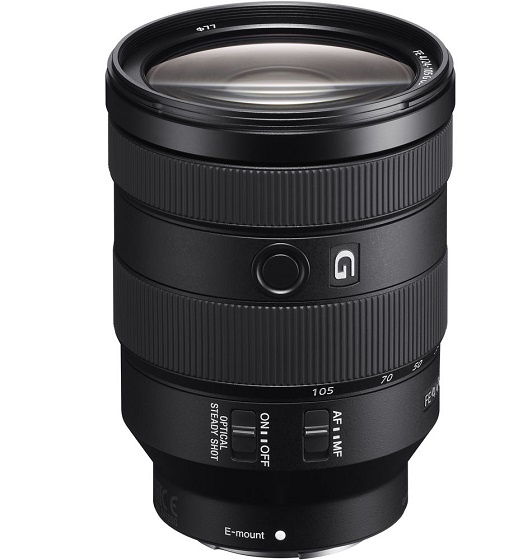
Sony 24-105 F4 G OSS Lens
Sony Expands Full-Frame Lens Lineup with New Compact, Lightweight FE 24-105mm F4 G OSS Standard Zoom Covering Wide-angle to Mid-telephoto range
New E-mount FE 24-105mm F4 G OSS Standard Zoom Delivers Serious Still and Video Performance with Compact Design
NEW YORK, Oct. 25, 2017 – Sony Electronics, a worldwide leader in digital imaging and the world’s largest image sensor manufacturer, has today introduced the latest addition to their expanding full-frame E-mount lens lineup, the FE 24-105mm F4 G OSS Standard Zoom (model SEL24105G).
The new full-frame lens covers the commonly used 24 to 105mm focal length range, delivering outstanding G Lens™ imaging performance with the most lightweight design in its class1, maximizing its versatility and usability. Therefore, the FE 24-105mm F4 G OSS can be used for versatile shooting such as landscape, portrait, wedding and so on. This lens also features fast, precise and quiet autofocus capabilities in both still and video shooting, making it an ideal complement for Sony’s extensive lineup of E-mount cameras.
High Optical Performance and Outstanding Resolution
Sony’s new FE 24-105mm F4 G OSS lens delivers excellent corner-to-corner sharpness throughout the entirety of its zoom range, while also producing beautifully rendered ‘bokeh’ or background defocus at all focal lengths.
This high image quality is made possible thanks to its advanced optical design featuring four aspherical lens elements, two of which are high precision AA (advanced aspherical) lenses. There are also three strategically located ED (Extra-low Dispersion) glass elements that work in combination with the aforementioned aspherical lens elements to minimize chromatic aberration and ensure the ultimate resolution is captured.
The lens also has Sony’s original Nano AR coating to minimize flare and ghosting, and utilizes a circular aperture to ensure it delivers high quality bokeh that is consistent for all Sony’s G series.
Compact, Lightweight Design and Shooting Flexibility
The new FE 24-105mm F4 G OSS lens weighs in at approximately 663 grams (23.4 oz), making it the lightest lens in its class1. When combined with one of Sony’s compact E-mount bodies, it gives photographers and videographers a far more mobile, manageable camera system that greatly increases their shooting flexibility.
In addition to the compact design and versatile 24-105mm focal length, the new lens has a minimum focus distance of 1.25ft, allowing for impressive close up detail. It also includes built-in optical image stabilization to make it easier to produce sharp, blur-free images when shooting handheld.
Highly Advanced and Accurate AutoFocus
In order to keep up with fast-moving subjects, the new standard zoom lens features a DDSSM (Direct Drive SSM) system that is capable of rapid positioning of the lens’ focus groups with high accuracy and very minimal noise. This advanced system combined with a constant F4 aperture at all focal lengths makes the SEL24105G an excellent choice for both still and video shooting.
Further adding to its versatility, the new standard zoom lens also features a customizable focus hold button, a dust and moisture resistant design2 and a fluorine coating on the front element to help minimize dust, water, oil and other contaminants.
Pricing and Availability
The new FE 24-105mm F4 G OSS Standard Zoom Lens will ship this November for about $1,300 US
Go Pro Hero 6 Black Action Camera:
Sound Devices Launches MixPre-10T: The World’s Smallest 10-Input/12-Track Recorder
Sound Devices have made an unexpected announcement of the MixPre-10T which is touted as the world’s smallest 10 input and 12 track recorder. The MixPre-10T becomes the third member of the groundbreaking MixPre series of recorders, mixers and USB audio interfaces. This is Sound Devices entry into the highly demanding and high volume but price sensitive segment of new age video publishers, youtubers, one man band operators, indie film producers etc.
This lightweight mixer recorder weighing only 0.9 kg without batteries joins the10-input/12-track recorder offers world-class sound quality, flexible powering, and built-in, highly accurate timecode generator/reader – perfect for production sound mixers, field recordists and sound designers.

MixPre-10T Front

MixPre-10T-Back
Exceptional Audio Quality
The MixPre-10T features eight Sound Devices’ Kashmir™ microphone preamps. The Kashmir™ microphone preamps are known to be high-performance, ultra-low-noise, discrete, Class-A mic preamps and are handcrafted by Sound Devices. This makes the MixPre series different from the other lower end recorder-cum-mixers. The Kashmir mic preamps feature a -130dBV noise floor, analog limiters, and new 32-bit A-to-D converters to ensure the highest quality audio recordings that far surpass those of other recorders using simple off-the-shelf, IC-based mic preamps.
Accurate Timecode Generator/Reader Plus Word Clock
The MixPre-10T features a built-in, ultra-high accuracy timecode generator and reader. Even when turned off or all power is removed, the MixPre-10T continues to hold accurate timecode for hours, more than long enough even for the most extended lunch break (or break in production)! So it appears that nature documentary shooters can use it even after short hikes.
With its BNC, Aux, and HDMI timecode connections, all common frame rates and timecode modes are supported as well as the ability to lock to or output word clock, ideal for synchronization in any digital audio environment.
Flexible Powering
For the ultimate in portability and convenience, the MixPre-10T has multiple powering options. The MixPre-10T features locking 4-pin Hirose connector (10-18V) for either external battery powering or AC-powering (with optional AC adapter).
Like the MixPre-3 & MixPre-6, the MixPre-10T can also be powered from AA batteries in a convenient detachable sled of eight cells, or via an optional sled that offers powering from up to two hot-swappable Sony L-Mount Li-Ion batteries.
Versatile I/O Routing
The MixPre-10T offers eight XLR/TRS combo Mic/Line level inputs, and a 3.5mm Aux/Mic input, which can also be used for 2-channel line input, camera return or timecode.
The MixPre-10T also provides comprehensive routing flexibility with its two TA3 balanced outputs and a 3.5mm Stereo output, each with routing matrix.
Auto Copy
The MixPre-10T’s auto copy feature is as easy as ABC – or what we like to call “Auto-Background Copying”. With this feature, users can record files up to 192kHz / 24-bit to an SD card, while automatically copying to a USB thumbdrive (USB A) for handoff to a client or as a backup copy.
Compact, Unintimidating Design
The size and weight of the MixPre-10T will fit any production environment. It features a responsive capacitive touch screen for incredibly simple and intuitive operation, and a bright, IPS sunlight-readable color LCD for the ultimate in convenient navigation. The MixPre-10T also provides a transport joystick for starting record or playback, and two user-programmable shortcuts allowing user customization.
Like all Sound Devices products, the MixPre-10T is extremely durable. Constructed with a die-cast aluminum chassis, it is both lightweight and incredibly robust. The ultra-compact MixPre-10T is perfect for jobs on the run.
Mixing, Metering and Monitoring
The MixPre-10T incorporates a simple mixer that offers gain control knobs, and access to panning and soloing via a simple press of the knob.
For metering, it provides easy-to-read ring LEDs with limiter activity, along with three LCD views for multitrack, mix, and USB return metering.
The MixPre also includes a 3.5mm jack for headphone monitoring with user-programmable routing presets from our custom-designed, powerful, wide-bandwidth headphone amp.
Flexible Wireless Control and Workflow
The MixPre features integrated Bluetooth Smart® for easy wireless connection, control and metering via the free Sound Devices Wingman app on iOS and Android devices.
What’s more, the MixPre-10T allows users to manage and create sound reports, and via Wingman, email those reports directly from a mobile device.
Intuitive Operation
Like its MixPre Series predecessors, the MixPre-10T’s user-friendly, touch-screen navigation features three modes of operation: Basic, Advanced, and Custom. Basic mode has been designed to allow a user to start recording right out of the box, and is intended for stereo recording applications, such as interviews and music recordings.
Advanced and Custom mode offer more experienced audio users access to multi-channel recording and advanced settings such as metering, routing, timecode, mic pre gain, stereo and M/S channel linking, channel phase invert, input/output delay, headphone presets, and more.
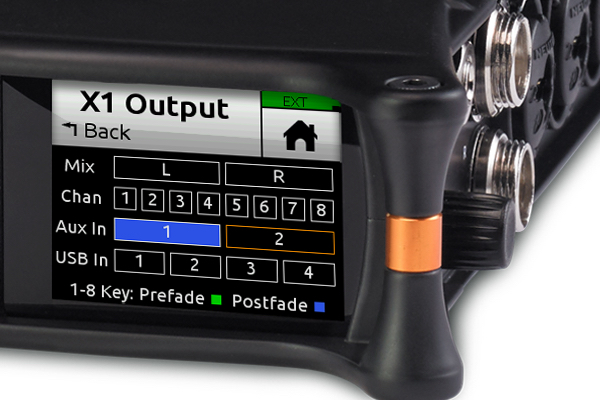
MixPre10T-X1-Output Screen
Powerful USB Audio Interface
The versatile MixPre-10T makes an excellent USB audio interface featuring 12 channels in and 4 channels out from a computer at up to 96k sample rate. The Mixpre-10T also features the unique ability to record to an SD card while simultaneously audio streaming via USB.
Given the specifications, unless otherwise mandated by the broadcasters, or if you can live without the Dugan automix, there are very few reasons for indies to not prefer the MixPre-10T over the higher end and costlier SD633. The MixPre-10T is scheduled to be available from the end of October 2017. There should be a heavy demand for this mixer/recorders in the foreseeable future.
Cost: $1799 US dollars
Sony Announces three new 4K camcorders:
Sony has announced three new camcorders which are capable of 4K HDR recording. These are the XDCAM PXW-Z90, NXCAM HXR-NX80 and Handycam FDR-AX700.
These camcorders feature a 1 inch sensor so they are likely to provide deep depth of field and would be suitable for many applications from prosumer to even some professional applications. The detailed Press Release have been produced below.

Sony 4k Camcoders
Press Release:
Sony announces three new palm camcorders featuring stunning Autofocus performance with 273-point phase-detection AF sensor and 4K HDR recording
The new XDCAM® PXW-Z90, NXCAM® HXR-NX80 and Handycam® FDR-AX700, equipped with 1.0-type stacked Exmor RSTM image sensor, offer an optimal choice to a wide range of users from professionals to video enthusiasts.
Sony has today announced three new 4K HDR¹camcorders: the XDCAM® PXW-Z90, the NXCAM ®HXR-NX80 and the Handycam® FDR-AX700. Featuring Sony’s ground-breaking Fast Hybrid AF system, all three palm camcorders combine a fast and reliable autofocus (AF) function adapted for shooting with a 1.0-type stacked Exmor RS CMOS image sensor, delivering stunning image clarity alongside a range of versatile shooting features. The new camcorders all support an instant HDR (High Dynamic Range) workflow, enabling users to produce breath-taking HDR content with minimum post-production to suit a range of content creation scenarios and applications.
The Fast Hybrid AF system ensures highly accurate focusing and tracking during shooting, delivered by 273 phase-detection AF points that cover approximately 84% of the shooting area, high-density placement of autofocus points and a newly developed AF algorithm. This reduces the burden of focusing, especially when accurate focusing is required for shooting 4K[i] films. In movie recording mode, the appearance of phase-detection AF frames indicates the focused area and easily allows users to monitor a subject that is in focus. The new camcorders feature a high-resolution OLED viewfinder (0.39-type OLED, 2,359k dots) and advanced touch screen operation, on the 3.5-type large LCD screen (1,555k dots), to allow users to quickly switch focus from one subject to another, while the AF Drive Speed, Tracking Depth Range and Subject Switching Sensitivity can all be configured as required for different subjects and content styles.
The new camcorders support 4K HDR¹ recording with HLG (Hybrid Log-Gamma), offering an instant HDR workflow. This enables users to reduce the post-production work and produce high-quality HDR content without grading, which usually requires a highly skilled technique and specialist knowledge. They also have the following key technology features to support versatile shooting, including;
- 4K²full-pixel readout without pixel binning, using an enhanced BIONZ X™ image processing engine
- Super Slow Motion[ii]recording up to 960fps[iii], which is industry leading among palm categories and Slow & Quick Motion[iv]Full HD recording up to 120fps[v]
- S-Log3/S-Gamut3 capabilities for users to create and work with images as they desire.
- 29mm[vi] (35EQ)wide-angle ZEISS® Vario-Sonnar T* 12x optical zoom lens and 18x Clear Image Zoom[vii]
- Less image distortion (rolling shutter phenomenon), in comparison to conventional models when shooting subjects in motion
Workflow efficiency benefits such as Proxy recording, relay recording and simultaneous backup recording are also delivered thanks to the new camcorders’ dual memory card slots and multi-camera operation capabilities supported by TC (time code)/UB (user bit). The three new camcorders also have REMOTE terminals, Multi-Interface Shoe™, and HDMI Type A to ensure enhanced operability.
“We strongly believe in empowering customers to tell amazing stories, whether it’s a journalist out in the field covering a breaking news event, or a freelancer working under the tight deadline pressures of a one-day corporate shoot” explained James Leach, European Product Manager, Sony Professional Solutions Europe. “Our new palm camcorders do exactly that. By minimising the efforts required to focus on a subject in-frame and streamlining the post-production workflow, we’re helping users concentrate on what they do best: storytelling.”
In addition to the above key features as series, the XDCAM® PXW-Z90 and NXCAM® HXR-NX80 also feature dual XLR audio input, a detachable handle, and access to Content Browser Mobile – a supporting smartphone application to enable Wi-Fi® monitoring, Camcorder remote control and wireless timecode sync[viii] between multiple cameras.
The PXW-Z90 also includes several features to suit broadcast-specific requirements including XAVC®format recording, which provides high-quality images at 4:2:2 10 bit (HD) and 4:2:0 8 bit (QFHD) in addition to conventional broadcasting
MPEG2HD9format recording, 3G SDI connectivity for compatibility with existing broadcasting equipment, and networking functions to support news reporting, such
as compatibility with XDCAM® air, the Sony cloud-based ENG subscription service.
NXCAM® HXR-NX80 and Handycam® FDR-AX700 adopt XAVC S®[ix],an extended format of XAVC for consumer use which can record high-defined 4K2 films.
The XDCAM® PXW-Z90, NXCAM® HXR-NX80 will be available in December and Handycam® FDR-AX700 will be available in October.
Natural History
COUNTRY NOTEBOOK: M. Krishnan: ‘Raising a Hare and chasing a Rabbit‘ By Saktipada Panigrahi
https://www.indiawilds.com/forums/showthread.php?8852-Country-notebook-m-krishnan&p=84315#post84315
New Distribution of a ‘Lethal Friend’
Text and Images by : Surajit Bhadra Roy
Introduction :
Have you ever seen a dead insect on a dry twig or on a grass? We generally, like to avoid these kinds of things. In the morning of the Christmas Eve, 2016, I was passing by a bush. Suddenly, I discovered a fly (Sarcophaga sp.) on the tip of a long grass leaf and its wings were stretched unusually. To observe the fact, I went closer to the fly and there I found that the fly was dead. Moreover, I found that the fly was drizzled with dew drops and the abdomen of that fly was looking larger than the other normal flies. The fly was actually infected with a fungus called Entomophthora muscae. It is a deadly fungus, pathogenic to the house fly (Musca domestica) along with some other flies. The word Entomophthora means ‘Insect killer’.
To read further download the PDF from the below link –
Wildlife Photography
Tiger in Kabini by Mrudul Godbole
https://www.indiawilds.com/forums/showthread.php?18470-Tiger-in-Kabini
Sloth Bear by Vipin Sharma
https://www.indiawilds.com/forums/showthread.php?18469-Sloth-bear-RTR-diary-June-17
Wallowing Sambar by V S Sankar
https://www.indiawilds.com/forums/showthread.php?18459-Wallowing-Sambar!
Mottled-Wood Owl by Shyamala Kumar
https://www.indiawilds.com/forums/showthread.php?18455-Mottled-Wood-Owl
Yellow-wattled Lapwing by Samrat Sarkar
https://www.indiawilds.com/forums/showthread.php?18475-The-Butterfly
Bamboo-Pit-Viper by Abhishek Jamalabad
https://www.indiawilds.com/forums/showthread.php?18461-Bamboo-Pit-Viper
Leaf Weevils by Arun Acharjee
https://www.indiawilds.com/forums/showthread.php?18445-The-Call-of-Monsoon
The Bat-posture by Prajwal Ullal
https://www.indiawilds.com/forums/showthread.php?18460-The-bat-posture
Juvenile Bull-Frog by Anil Kumar Verma
https://www.indiawilds.com/forums/showthread.php?18465-Juvenile-Bull-Frog
Tiger Beetle by Dheerendra Singh
https://www.indiawilds.com/forums/showthread.php?18446-Like-smiley
I look forward to your inputs and support in preserving the last tracts of wilderness and wildlife left in our beautiful country and raising awareness about it. For other interesting articles and images check –
http://www.indi
To post in the IndiaWilds forums, you can register free of cost using your Full Name as user id at:
http://www.indiawilds.com/forums/register.php
If you are already a member of IndiaWilds and have forgotten your user id and/or password you can mail to:
administrator@indiawilds.com
If you want to contribute original articles, or for any image enquiries please send a mail to:
administrator@indiawilds.com
Regards,
Sabyasachi Patra
Profile | Contact Us | Facebook | Diary | Equipment reviews | Forums | IndiaWilds You Tube Channel
Please post your views and feedback in the comments below.
- GoPro Hero 12 Black - 6 September,2023
- Leopards: The Last Stand - 2 July,2023
- Drifting in the Waters of Sundarbans - 26 March,2023



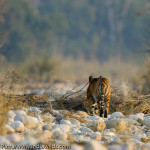


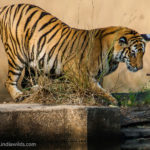




It is always a joy to receive the treasure trove of a new IndiaWilds newsletter. It is so true that Supreme Court’s ban on selling crackers in Delhi was like the Yudhisthir’s aside on Ashwatthama. Everytime we go shopping for vegetables we carry a bunch of cloth bags and insist on not taking polythene wrappers but the vendors insist shoving it all into polythene pouches by default. When I see the degrees of barbarianism our countryman can descend to, I wonder if we are fit for “democracy”.